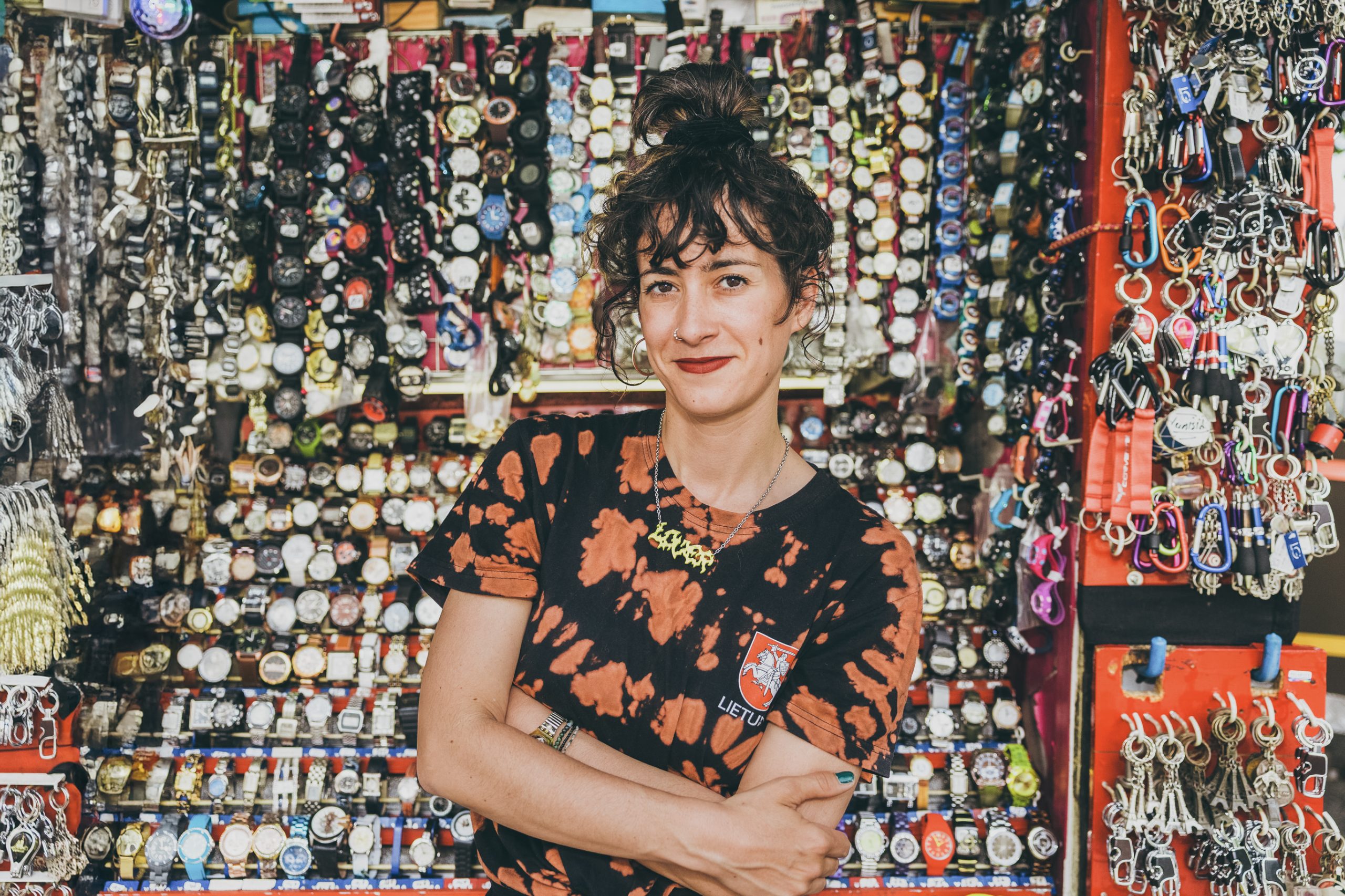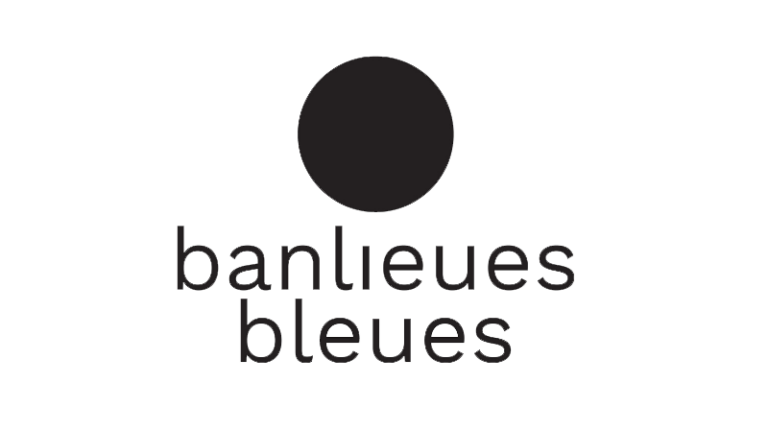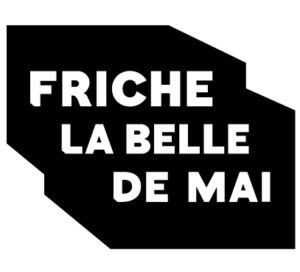Blanche Lafuente
Musician
September - October 2026

- Music
- Atlanta
“To move and to be moved: how music and dance structure and transform the collective by opening up a shared sensorial space.”
I am Blanche Lafuente, drummer, arranger, and improviser. Since the very beginning, I have been seeking in rhythm a space of encounter and transformation: a way to connect bodies, to share intensity, and to open up a collective imagination. My training in theater and jazz gave me a solid foundation, but improvisation has become the core of my practice, as it makes it possible to fully inhabit the present and engage in dialogue with the unexpected.
My path is nourished by intersections: traditional West African music, flamenco, electronic music, clowning, and performative practices. I collaborate regularly with circus and theater, questioning the scenic and physical dimensions of musical performance. In 2023, I created Secousses, a performance blending popping dance and electronic music around rhythm as a vital force and a shared movement.
What guides me is the conviction that music goes beyond the purely aesthetic realm: it is a tool for social connection, care, inclusion, and celebration. This is what I wish to explore in Atlanta, where I will immerse myself in collective practices such as drumlines, gospel, and electronic music. I would like to understand how they nourish creativity, spirituality, and togetherness, in order to bring these experiences back to France through participatory workshops and multidisciplinary creations at the crossroads of art and ritual.
Blanche Lafuente is a French drummer and improviser. Trained in theater and jazz (DEM in jazz, 2018), she develops a body of work situated at the crossroads of rock, free jazz, traditional and electronic music, and performance. She is a founding member of the duo Qonicho Ah! and the trio NOUT (Jazz Migration 2021, Zenith Award 2023), and in 2025 she will launch Ganagobie, a project combining voice, dance, electronic music, and live performance. She regularly collaborates with large ensembles, notably Mats Gustafsson’s Fire! Orchestra and Kogoba Basigui by Eve Risser and Naïny Diabaté. Her work explores rhythm as a collective and sensorial force, linking music, bodies, and shared spaces.
My project for Villa Albertine in Atlanta is an artistic exploration of collective rhythmic practices and their potential for social transformation. For several years, I have been interested in forms where music transcends the aesthetic realm to become a space of belonging, inclusion, and care, as well as in the organic connections between live music and dance.
Atlanta, with its rich cultural and musical landscape, represents an exceptional field of exploration for me. I wish to immerse myself in practices such as drumlines, gospel, and electronic music, which embody strong communal and participatory traditions. These forms are at once festive, spiritual, and political: they carry the memory of African American struggles while creating vibrant spaces of solidarity and collective celebration in which the body is always in motion.
During my residency, I will engage in observation, encounters, and hands-on experimentation. I hope to participate in rehearsals, services, workshops, and events, in order to understand from within how these practices shape the body, the collective, and shared space. I will document this research through sound and/or video notebooks, which will later feed into the creation of a project in France.
The expected outcome is twofold: on one hand, to design participatory workshops open to diverse audiences (musicians, dancers, amateurs), allowing them to experience the power of rhythm as a vector of inclusion; and on the other, to initiate a multidisciplinary creation blending music, dance, and performance, where the energy of drumlines, gospel, and electronic music is transposed into a European context.
This project extends my ongoing research: making music into a shared space, where everyone can find their place, their voice, their breath, and their unique expressivity.
I chose Atlanta because I had a true coup de foudre for the city during my visit in November 2024 for the creation of Music is My Field (with French and American musicians).
It is a city marked by the memory of the civil rights movement (it is the birthplace and home of Martin Luther King Jr.), but also by more ancient spiritual traditions, those of the Native peoples who once inhabited the area (the Creek, Cherokee, and Muscogee peoples). The city’s original name, Panakahuili, bears witness to this history. In many Native nations, the drum lies at the heart of ceremonies: it symbolizes, among other things, the heartbeat of the Earth and connects human beings to all living things. This dimension resonates deeply with my work, which explores rhythm as a vital and collective force.
Atlanta is also known as “The City in the Forest,” an urban landscape where nature remains highly present, almost in tension with the density of the metropolis. This fragile balance between urbanity, memory, and spirituality fuels my desire for exploration.
I wish to meet musicians, dancers, choir directors, teachers, and performers, as well as artists and researchers connected to Afro-American and Native American spiritual traditions. Drumlines, gospel, electronic music, and the memory of ritual drums all appear to me as different ways of understanding music as a collective, spiritual, and political language.
These dynamics resonate strongly with my own practice: seeking to understand how rhythm structures both the body and the group, and how these experiences can inspire new multidisciplinary creations in France—works in which music regains its ritual, symbolic, organic, and celebratory dimension.
In partnership with

Banlieues Bleues
Banlieues Bleues (which means “blue suburbs”), non profit association originally funded by 12 towns of Seine-Saint-Denis (on the outskirts of Paris) runs since 1984 the festival of the same name, a key event in the French musical season, offering an artistic platform of international repute where creativity and revelations occupy a large place of the bill. Through a wide range of workshops called “actions musicales” it has also assumed the pioneering job of heightening awareness and sensitivity, together with musical training, for the general public and particularly for new audiences. Throughout the year, Banlieues Bleues runs also its own venue, La Dynamo, a musical complex located in Pantin welcoming cutting-edge concerts and also residencies and rehearsals.

Friche la Belle de Mai
A prototype born in 1992 of what we now call “Third Places” — new cultural and urban models — La Friche brings together, in a single reinvented space, urban transformation, ongoing artistic activity, connection to the local area, and active cooperation in the public interest.
Originally a former Seita tobacco factory, La Friche la Belle de Mai is now a hub of creativity and innovation. It serves both as a workplace for 70 resident organizations (with 350 artists, producers, and employees working there daily), and as a venue for the public, offering around 600 artistic events each year, from children’s workshops to major festivals.
Attracting nearly 450,000 visitors annually, La Friche la Belle de Mai is a multifunctional public space covering 45,000 square meters. It includes five performance and concert halls, community gardens, a playground and sports area, a restaurant, a bookstore, a daycare center, 2,400 square meters of exhibition space, an 8,000-square-meter rooftop terrace, and a training center.

